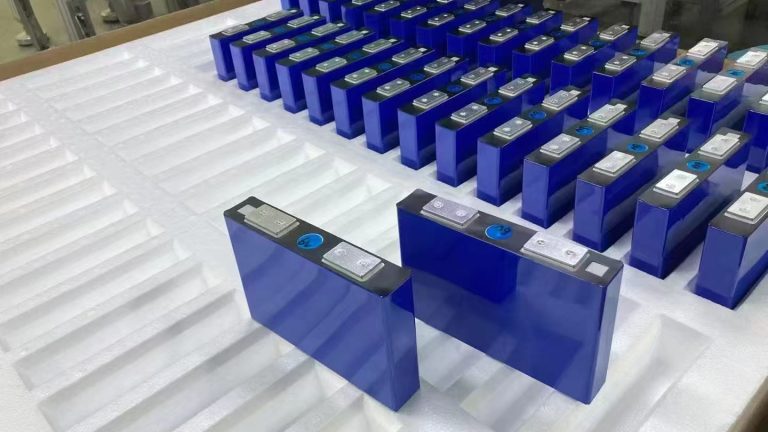In the fast-growing energy storage industry, installers and small project developers often face a common question:
Can you mix batteries from different brands in one system?
At first glance, it might seem harmless — after all, if the voltage and capacity look similar, why not connect them together? But in reality, mixing batteries from different manufacturers can cause serious performance, safety, and warranty issues.
In this article, we’ll explain what happens technically when you combine different battery brands, why it’s risky even if they look “compatible,” and what best practices to follow when expanding or replacing energy storage systems.
1. Why People Consider Mixing Battery Brands
For small-scale or commercial energy projects, mixing battery brands can be tempting for several reasons:
- The original brand is no longer available or discontinued.
- The customer wants to expand capacity using readily available products.
- Different suppliers offer varying delivery times or specifications.
- A desire to reduce costs by mixing similar models.
However, while these motivations are understandable, battery systems are electrochemically sensitive — and small differences between brands can lead to major imbalances over time.
2. The Key Problem: Batteries Are Never Truly Identical
Every battery — even those of the same chemistry (e.g., LiFePO₄, NMC, or lead-acid) — behaves differently depending on:
- Manufacturing process
- Cell quality and internal resistance
- BMS (Battery Management System) design
- Firmware control logic
- Communication protocol (CAN, RS485, etc.)
Even a small difference in voltage calibration or charging curve can cause one battery to overcharge while another undercharges, leading to imbalance and accelerated degradation.
3. What Technically Happens When You Mix Battery Brands
Let’s look at what occurs inside the system when batteries of different brands are connected — even if they have the same nominal specifications (e.g., 51.2V 100Ah).
a. Unequal Voltage and State of Charge (SOC)
Each battery’s BMS measures SOC differently.
If one battery reports 100% at 53.2V and another at 52.8V, when connected in parallel, the higher-voltage unit will discharge into the lower one until voltages equalize — creating internal current flow that wastes energy and generates heat.
This leads to:
- Increased internal stress
- Faster capacity loss
- Possible BMS protection trips
b. Mismatched Internal Resistance
Different brands use different cell types and aging histories. One battery may have a higher internal resistance, causing it to charge and discharge more slowly.
Result:
- The lower-resistance battery carries most of the load current.
- It overheats and degrades faster.
- System imbalance grows over time.
c. Conflicting BMS Communication
Modern lithium batteries rely on BMS communication (via CAN or RS485) to share voltage, current, and temperature data with the inverter.
When you mix brands:
- The inverter may not read both BMS signals correctly.
- The system could ignore one pack entirely or report errors.
- Some hybrid inverters will shut down for safety.
Even if both packs “work” initially, their BMSs do not coordinate balancing, temperature control, or protection functions — a major safety risk.
d. Uneven Temperature Behavior
Different brands use different cooling and enclosure designs.
During high current operation, one pack may heat faster, triggering thermal protection or current limitation, which affects the whole system’s performance.
4. Real-World Consequences of Mixing Battery Brands
1. Reduced Usable Capacity
When packs have different voltage curves, the system can only use the range common to all batteries. For example:
- Battery A: 48–53.2V
- Battery B: 47.5–52.8V
→ The inverter limits the usable range to 48–52.8V to avoid imbalance, reducing total available energy.
2. Premature Battery Aging
Unequal current sharing and inconsistent charge/discharge cycles shorten life expectancy — especially for the more active pack, which cycles deeper and more frequently.
3. System Instability and Alarms
Mixed packs often cause:
- SOC mismatch warnings
- CAN communication errors
- BMS protection trips or inverter shutdowns
In severe cases, this can interrupt power supply to loads or even trigger safety isolation.
4. Safety and Warranty Issues
Manufacturers and insurers typically void warranties if different brands or capacities are mixed.
Uncontrolled balancing currents can lead to overheating or fire hazards, especially in high-capacity systems.
5. Mixing Old and New Batteries — The Same Risk
Even if you’re using the same brand, mixing old and new batches can create similar issues.
Older batteries have:
- Higher internal resistance
- Lower actual capacity
- Slightly different voltage response
When connected to new packs, they discharge faster and charge slower, forcing the new packs to “work harder.”
For this reason, many manufacturers recommend not expanding systems more than 6–12 months after the initial installation unless the BMS supports dynamic balancing.
6. Can It Ever Be Done Safely?
In some limited cases, it is technically possible to mix different brands — but only with proper electrical and control isolation.
Option 1: Use Separate Battery Strings
You can install two or more battery brands on separate inverter inputs or charge controllers. Each string operates independently and never shares direct current paths.
This approach is common in hybrid or microgrid setups with multiple MPPT and battery channels.
Option 2: DC Coupling with Isolation Devices
Advanced setups may use DC/DC converters between different battery packs.
This isolates voltage differences and allows separate charge control — but increases system cost and complexity.
Option 3: AC Coupling
Each battery system connects to the AC side through its own inverter. They synchronize on AC frequency but remain electrically independent on the DC side.
AC coupling is safe but requires compatible inverter controls and grid-forming capability.
7. Best Practices for Battery System Expansion
If your customer wants to expand capacity or replace old batteries, here’s how to do it safely:
- Use the same brand, model, and firmware version.
Minor firmware differences can still cause communication or balancing issues. - If possible, buy expansion modules from the original supplier.
Manufacturers usually design parallel kits or communication hubs for safe scaling. - Perform capacity matching before connection.
Ensure all batteries are charged to the same voltage before parallel connection. - Avoid mixing cell chemistries (LFP, NMC, etc.)
Each chemistry has different voltage curves and control parameters. - Consult the inverter manufacturer.
Some hybrid inverters can only communicate with approved battery brands. Using others may cause incompatibility or system errors. - Consider modular rack systems.
These allow gradual expansion using pre-tested, communication-ready modules from the same series.
8. Installer’s Perspective: The Communication Challenge
From an installer’s viewpoint, one of the biggest obstacles in mixed-brand systems is communication protocol mismatch.
Each battery brand uses its own CAN/RS485 protocol. Even if both are “48V 100Ah LiFePO₄,” their communication messages differ in:
- Baud rate
- CAN ID
- SOC and voltage scaling
Without proper protocol alignment, the inverter cannot correctly interpret data, leading to:
- Incorrect SOC readings
- Fault alarms (“Battery not detected”)
- Inefficient charge control
To ensure smooth integration, always confirm the battery–inverter compatibility list provided by the inverter manufacturer.
9. Industry Standards and Certification
As the energy storage industry matures, international standards increasingly emphasize system-level compatibility and communication safety.
Relevant standards include:
- IEC 62619 – Battery safety for stationary use
- UL 9540 / UL 9540A – Complete ESS safety testing
- CANopen / Modbus standards – Communication protocols
Certified systems are tested as a unit — inverter + battery — not as individual components.
Mixing uncertified combinations technically invalidates that certification.
While it may seem convenient, mixing different battery brands in the same system is almost never recommended.
Even if the voltage and capacity match, hidden differences in BMS design, internal resistance, and control logic can lead to:
- Imbalanced charging/discharging
- System instability
- Accelerated aging
- Loss of warranty and potential safety risks
If expansion or replacement is needed, always use the same brand and model, or install separate independent systems with proper control interfaces.
In the long term, maintaining uniformity and communication integrity across all components ensures safety, reliability, and optimal system performance — protecting both your investment and your reputation as an energy professional.









